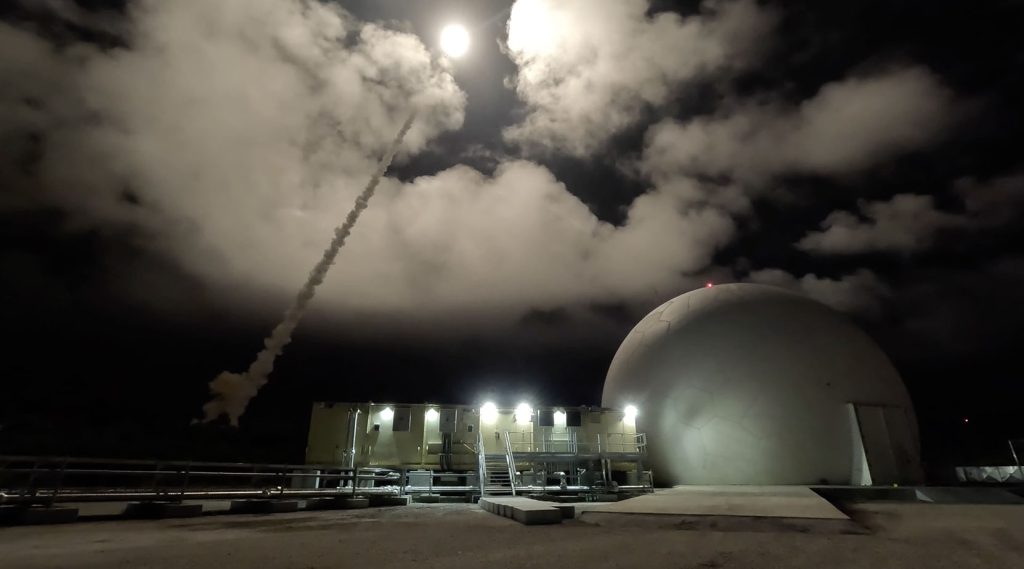The United States successfully conducted its first-ever ballistic missile intercept test in Guam, marking a significant milestone in bolstering the defense capabilities of this strategically vital Western Pacific outpost against potential threats, particularly from China. The test, involving the Aegis Guam System, demonstrated the system’s ability to detect, track, and neutralize a medium-range ballistic missile target using a Standard Missile-3 Block IIA interceptor. This successful interception underscores the U.S. commitment to fortifying Guam’s defenses and enhancing regional security in the face of evolving adversarial threats, primarily emanating from China’s growing military assertiveness. Guam’s proximity to China, approximately 1,800 miles from the Chinese coast, makes it a key target for potential missile attacks, but also a strategically important staging ground for projecting U.S. military power in the Indo-Pacific.
The intercept test, part of a larger military exercise named Sling Stone, provided a critical opportunity to assess and refine the integrated air and missile defense capabilities in the region. The exercise involved seamless coordination between various U.S. military assets, including the Aegis Guam System’s AN/TPY-6 radar, the Vertical Launching System (VLS), and the deployed THAAD battery, as well as the participation of allied forces, specifically a Japanese destroyer. This joint effort effectively simulated a real-world scenario, allowing forces to practice detecting, tracking, and engaging a simulated threat, thereby enhancing interoperability and demonstrating a unified defense posture against potential adversaries. The involvement of the THAAD system, deployed to Guam since 2013 in response to North Korean missile threats, further highlights the island’s layered defense strategy, capable of addressing a range of ballistic missile threats.
Guam’s strategic significance lies in its location within the second island chain, a crucial element of the U.S. defense strategy in the Indo-Pacific. This chain of islands serves as a forward defense line, aimed at containing China’s military expansion and protecting vital sea lanes. The island’s proximity to potential adversaries underscores the Pentagon’s prioritization of homeland defense, with Guam serving as a linchpin for maintaining U.S. military presence and deterring aggression in the region. The successful intercept test reinforces Guam’s role as a critical node in this defense network, contributing significantly to regional stability and safeguarding U.S. interests in the increasingly contested Indo-Pacific.
The intercept test serves as a practical demonstration of the evolving Enhanced Integrated Air and Missile Defense (EIAMD) system envisioned for Guam. This comprehensive system, incorporating various interceptor missiles and advanced radar technologies, aims to provide 360-degree protection against a spectrum of threats, including cruise, ballistic, and hypersonic missiles. The successful test validates the core components of the EIAMD system and its ability to effectively counter sophisticated missile attacks, paving the way for its full deployment in the coming years. This robust defense architecture is crucial for ensuring Guam’s security and its ability to function as a strategic hub for U.S. military operations in the region.
The development and deployment of the EIAMD system represent a substantial investment in Guam’s defense infrastructure and reflect the growing importance of the island in the context of great power competition. With the planned deployment of the EIAMD system across 16 sites in Guam, the island is poised to become a formidable bastion of U.S. defense capabilities in the Western Pacific. This investment signals a long-term commitment to maintaining a robust military presence in the region and underscores the U.S. dedication to deterring potential adversaries and ensuring the security of its territories and allies. The EIAMD system, upon completion, will significantly enhance Guam’s resilience against a wide range of threats, solidifying its role as a critical strategic asset in the Indo-Pacific.
The ballistic missile intercept test, conducted within the framework of Exercise Sling Stone, not only demonstrated the effectiveness of the U.S. missile defense system but also highlighted the strength of alliances and partnerships in the region. The participation of a Japanese destroyer in the exercise underscores the growing cooperation between the U.S. and its allies in countering regional security challenges. This collaborative approach to defense strengthens regional security architecture and enhances the ability to respond effectively to evolving threats in the Indo-Pacific. The successful intercept test and the broader Sling Stone exercise send a clear message of deterrence to potential adversaries and reaffirm the U.S. commitment to maintaining peace and stability in the region through a combination of robust military capabilities and strong alliances.










